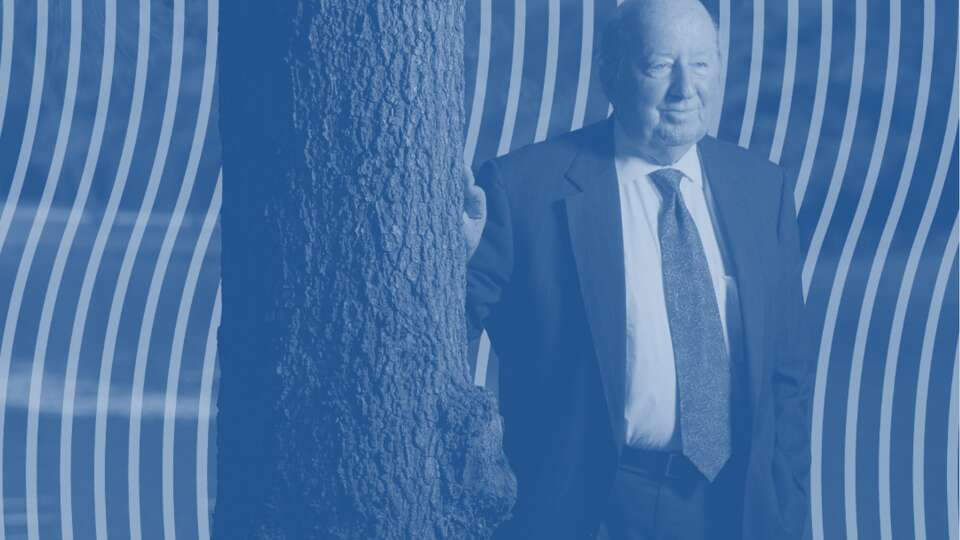October 15, 2024

Happy birthday, The Woodlands! As it turns 50, we look back at the origin story and its legacy
George P. Mitchell, the founder of The Woodlands township, once said, "If you want to create something, you have to have a vision." His vision turns 50 years old this week.
A half-century is a sufficient time for comings and goings — mostly comings in the case of The Woodlands — which makes this a good time to look back on an area we now take for granted as a thriving community that has avoided incorporation.
Like seemingly everything in this area, it's a multifaceted story. It's an immigrant tale. It's a risk/reward tale. It's a story about cultural trends and demographics. There's a pretty cool soundtrack to it, too.
The story of The Woodlands is a permutation of the oft-repeated line from a beloved baseball novel and film. This Suburb of Dreams was a case of "If you build it, they will come."
But there are no guarantees with such urban development. Similar communities in other places didn't take root. So let's look back at how this space 27 miles north of Houston became its own sylvan (ish) enclave.
An (other) immigrant story
The tell in Mitchell's name is the middle initial. The P stands for Phydias. Mitchell was born in Galveston in 1919 to Savvas and Katina Paraskevopoulos, the former a goat herder in Arcadia who, in 1901, came to the United States, where he took on the name Mike Mitchell and started a shoe-shining business and later a dry cleaning company.
Mitchell had a lot of hustle. He lost both parents as a teenager, so he worked a pier job and brought home any fish he'd catch. He launched several money-making endeavors while attending Texas A&M, selling bookshelves he'd made and printing school stationery. He got a degree in petroleum engineering. A corporate oil job was interrupted by the World War II. Upon his honorable discharge, he started Mitchell Energy and Development Corporation.
The company proved fruitful, particularly in the field of shale gas extraction. Mitchell's successes led him to expand his work into real estate in Galveston (including more than $100 million in the Strand seaport part of the city) and the Houston area.
Seeding a community
One could say The Woodlands was fracked into existence.
Mitchell, in the 1960s, thought about creating a planned community outside of Houston.
Proximity to a major freeway, in this case, Interstate 45, an airport and Houston itself were crucial attributes in selecting the space. Mitchell bought the first piece of land for his vision a decade before The Woodlands. He started with the site of Grogan's Lumber Company, a 17,000-acre space. Construction began in 1972. The Woodlands was one of 13 that were part of the New Communities Program the Department of Housing and Urban Development started.
"We looked at every new town in the world before we started with The Woodlands," Mitchell said. "We knew that with Houston's dynamics, this was a good place to put it."
On Oct. 19, 1974, The Woodlands had its Grand Opening.
The footprint of The Woodlands would grow by another 11,500 acres over the years.
The population would grow, too.
A space for songwriters
A decade into its existence, The Woodlands had a hospital. Three years later, it became a regional player for live music, opening the Cynthia Woods Mitchell Pavilion, an outdoor amphitheater named after Mitchell's wife. The space opened on April 27, 1990, with a Houston Symphony performance. The following night, Frank Sinatra headlined.
In 1987, its population was about 22,000. Since then, the population has grown by 100,000, with a metro area that is more than five times that. Mitchell was around to see much of its growth; he died in 2013.
Oddly enough, its cozy confines have produced a number of country singer-songwriters. Jack Ingram, who built a grassroots following that exploded in the early 21st century, hails from The Woodlands. A Conroe native, country star Parker McCollum attended The Woodlands College Park High School.
As does Hayes Carll, who told the Chronicle The Woodlands was a secure place to grow up and the sort of place he knew he needed to leave to find his voice.
"I was 15, 16 and attracted to and obsessed with these Beat poets and songwriters and country guys, this whole side of life that had no representation in The Woodlands," he told the Chronicle in 2011. "I wanted to be in honky tonks and living on the road and living in the moment, and to me, at the time, that seemed as far away from where I grew up as you could be.
"Looking back on it now as a parent, it was a safe and nice place to grow up."
 | Andrew Dansby |
Ask Us Anything
What stumps you about Houston? Reply directly to this email with your questions.
Unsubscribe | Manage Preferences

Houston Chronicle
4747 Southwest Freeway, Houston, TX 77027
© 2024 Hearst Newspapers, LLC


No comments:
Post a Comment